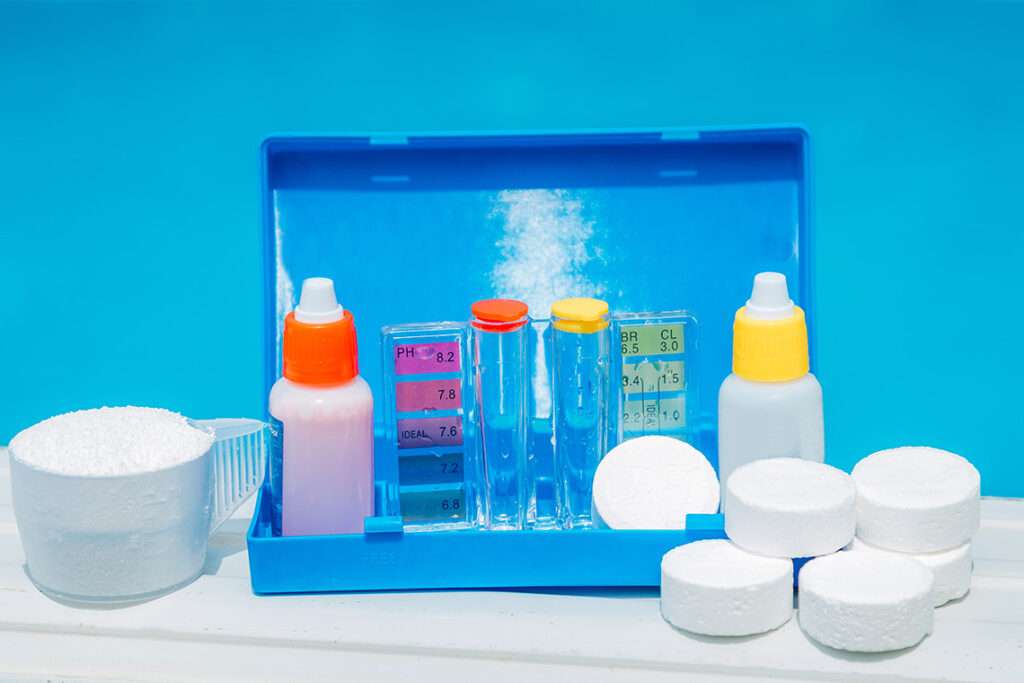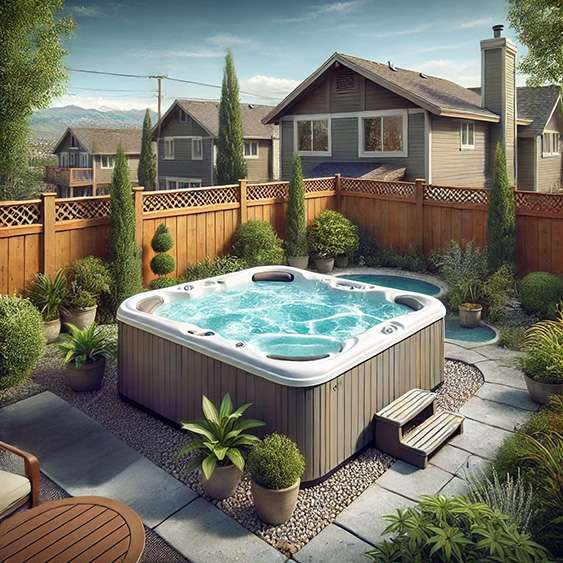Nothing ruins a good soak faster than murky water or that weird smell. The good news? Most water issues are easy to fix once you know what’s causing them. In this guide, we’ll break down the most common reasons hot tub water goes bad — and give you simple, step-by-step solutions to get it crystal clear again.
Causes of Poor Water Quality and Their Solutions
1. Imbalanced pH Levels
Solution:
- Regular Testing: Use pH test strips or a digital tester to check the pH level of your hot tub water at least twice a week.
- Adjust pH: If the pH is below 7.2, use a pH increaser. If it’s above 7.8, use a pH decreaser. Follow the manufacturer’s instructions for the correct dosage.
- Balanced Alkalinity: Ensure total alkalinity is within the 80-120 ppm range. This helps to stabilize pH levels. Use an alkalinity increaser or decreaser as needed.

2. Inadequate Sanitization
Solution:
- Regular Sanitization: Maintain chlorine levels between 1-3 ppm or bromine levels between 3-5 ppm. Check levels daily and adjust as necessary.
- Shocking the Water: Use a non-chlorine shock weekly to oxidize contaminants and refresh the sanitizer. For heavy use or visible contamination, use a chlorine-based shock.
- Sanitizer Maintenance: Consider using a floating dispenser for tablets to ensure a consistent release of sanitizer into the water.
3. Poor Filtration
Solution:
- Weekly Cleaning: Remove the filter and rinse it thoroughly with a hose every week to remove surface debris.
- Monthly Deep Cleaning: Soak the filter in a filter cleaning solution monthly to remove oils and other contaminants that a simple rinse can’t handle.
- Regular Replacement: Replace filters every 12-24 months or more frequently if you notice a decline in performance. Always follow the manufacturer’s recommendations.
4. Contaminants
Solution:
- Pre-use Rinsing: Encourage users to take a quick shower before entering the hot tub to remove body oils, lotions, and other personal care products.
- Hot Tub Cover: Use a cover when the hot tub is not in use to keep out leaves, dirt, and other debris. This also helps to reduce water evaporation and heat loss.
- Enzyme Treatments: Use enzyme products that break down organic matter, making it easier for your filter and sanitizer to maintain clean water
General Maintenance Tips
1. Regular Water Chemistry Testing and Adjustment
Regularly testing your water chemistry is the first step to maintaining clear and healthy water. In addition to pH and sanitizer levels, you should also check total alkalinity and calcium hardness.
- Total Alkalinity: This should be maintained between 80-120 ppm. It acts as a buffer for pH, preventing drastic changes.
- Calcium Hardness: The ideal range is between 150-250 ppm. Low levels can cause corrosion of equipment, while high levels can lead to scaling.

2. Spa Shock Treatments
Shocking your hot tub is an important part of maintenance that helps to oxidize organic contaminants and refresh the sanitizer.
- Oxidizing Shock: Use a non-chlorine shock treatment weekly to break down contaminants without affecting sanitizer levels.
- Chlorine Shock: Use a chlorine-based shock occasionally for a more intensive clean, especially after heavy use or if the water is visibly cloudy.
3. Minimizing Contaminants
Preventing contaminants from entering your hot tub can significantly improve water quality.
- Pre-shower: Encourage all users to shower before entering the hot tub to remove body oils, lotions, and other products.
- Hot Tub Cover: Use a cover whenever the hot tub is not in use to prevent debris from entering the water. This also helps to retain heat and reduce chemical consumption.
4. Regular Draining and Refilling
Even with the best maintenance, hot tub water should be completely drained and refilled periodically to ensure optimal water quality.
- Drain and Refill Schedule: Plan to drain and refill your hot tub every 3-4 months or more frequently with heavy use. This helps to remove dissolved solids that can’t be filtered out.
- Deep Clean: Take the opportunity to clean the hot tub shell and components thoroughly when the water is drained.
Conclusion
By understanding the causes of poor water quality and implementing these solutions, you can ensure that your hot tub remains a safe and enjoyable place to relax. Regular maintenance and attention to water chemistry are key to keeping your spa water crystal clear.
Maintaining your hot tub doesn’t have to be a daunting task. With consistent care and the right approach, you can enjoy crystal-clear water and all the benefits of your hot tub. Dive in and relax confidently, knowing your water is clean and inviting.
If you have any questions or need further assistance, reach out to Love’s Hot Tubs. We’re dedicated to helping you with all your hot tub needs! Additionally, download our free PDF guide, “Hot Tub Troubleshooting Tips: Poor Water Quality.”

